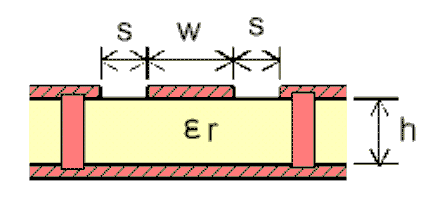ZHCSH26E March 2017 – May 2021 CC3120MOD
PRODUCTION DATA
- 1 特性
- 2 应用
- 3 说明
- 4 功能方框图
- 5 Revision History
- 6 Device Comparison
- 7 Terminal Configuration and Functions
-
8 Specifications
- 8.1 Absolute Maximum Ratings
- 8.2 ESD Ratings
- 8.3 Recommended Operating Conditions
- 8.4 Current Consumption Summary
- 8.5 TX Power and IBAT versus TX Power Level Settings
- 8.6 Brownout and Blackout Conditions
- 8.7 Electrical Characteristics
- 8.8 WLAN Receiver Characteristics
- 8.9 WLAN Transmitter Characteristics
- 8.10 Reset Requirement
- 8.11 Thermal Resistance Characteristics for MOB Package
- 8.12 Timing and Switching Characteristics
- 8.13 External Interfaces
- 9 Detailed Description
- 10Applications, Implementation, and Layout
- 11Environmental Requirements and Specifications
- 12Device and Documentation Support
- 13Mechanical, Packaging, and Orderable Information
请参考 PDF 数据表获取器件具体的封装图。
机械数据 (封装 | 引脚)
- MOB|63
散热焊盘机械数据 (封装 | 引脚)
10.2.4 Transmission Line Considerations
The RF signal from the device is routed to the antenna using a Coplanar Waveguide with ground (CPW-G) structure. CPW-G structure offers the maximum amount of isolation and the best possible shielding to the RF lines. In addition to the ground on the L1 layer, placing GND vias along the line also provides additional shielding. Figure 10-4 shows a cross section of the coplanar waveguide with the critical dimensions.
 Figure 10-4 Coplanar Waveguide (Cross
Section)
Figure 10-4 Coplanar Waveguide (Cross
Section)Figure 10-5 shows the top view of the coplanar waveguide with GND and via stitching.
 Figure 10-5 CPW With GND and Via Stitching
(Top View)
Figure 10-5 CPW With GND and Via Stitching
(Top View)The recommended values for the PCB are provided for 2-layer boards in Table 10-4 and 4-layer boards in Table 10-5.
| PARAMETER | VALUE | UNIT |
|---|---|---|
| W | 24.5 | mils |
| S | 6.5 | mils |
| H | 42.1 | mils |
| Er (FR-4 substrate) | 4.8 |
| PARAMETER | VALUE | UNITS |
|---|---|---|
| W | 21 | mils |
| S | 10 | mils |
| H | 16 | mils |
| Er (FR-4 substrate) | 4.5 |